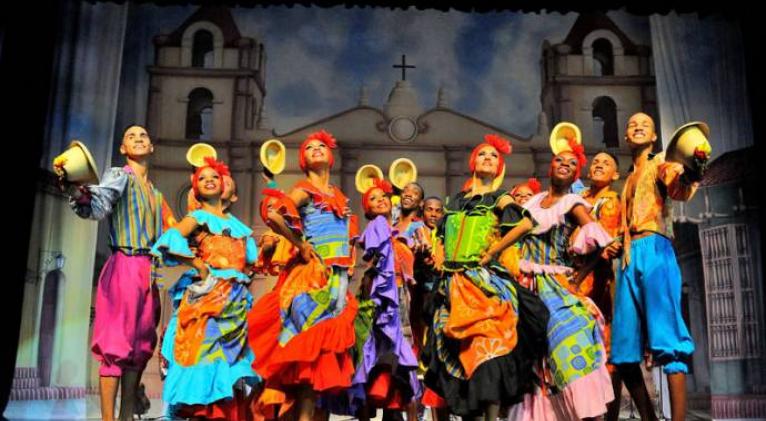It’s enough to appreciate a show by the Camagua company to understand that concept of folklore dramatization managed by the great masters Ramiro Guerra and Rogelio Martínez Furé (well, handled by many more). Professional companies do not make folklore. It’s up to the companies to recreate, stylize, rank expressions of popular heritage. Folklore is made by the people. And I know that I use a term, folklore, which is currently under discussion in academic circles. But, we insist, the cultural traditions of the people are kept, defended, even made to evolve by the people themselves. And that’s a starting point for professional companies.
Camagua has shown once again, in its successful season at Covarrubias ward of the National Theater, the exquisite and spectacular work of recreation and staging of dissimilar cultural traditions, in a rigorous process of investigation that has meant essences, matrixes, and shades, indisputable references of costumary practices... and has turned them into pieces that respect fundamental guidelines of scenic representation.
Dramatizing means discriminating (in the good sense of the word), that is, choosing from an original material the most aesthetically and conceptually forceful, and reorganizing it, based on a defined notion of dramaturgy, stylizing movements and routines, establishing new group dynamics... everything, I insist, without betraying identity features.
It’s not an easy task. Because a show for the stage is not, or should not be, a faithful testimony of the practices of the so-called focus. But at the same time, it cannot be detached from these practices to become a folkloric, superficial vision of the heritage that it attempts to honor.
What maestro Fernando Medrano has done with the peasant traditions of Majagua, or the dances and songs of emigrants and descendants of Jamaican emigrants in Baraguá, both towns in Ciego de Ávila, is to highlight a legacy in a choreographic and musical conception for the scene. And all articulated with good taste, sense of contrasts, functional alternation of tempos, interesting spatial designs.
As for the choreographies of teacher Bárbara Balbuena, who is an authority on these issues, the same could be stated. She starts from traditional practices, with a strong religious spirit or singular popular impact, and submits them to a rigorous curatorship, which emphasizes aesthetic values without denying concepts. What comes on the scene is not a document, it’s art.
there are many things still left unsaid: it was an extraordinary season. But to sum it up I’m going to celebrate what many people have already celebrated: the commitment, the enthusiasm, the proven quality of dancers and musicians. This is not a company of great soloists. And that's not a flaw. It’s a company with a great dance troupe, a virtuoso dance troupe, committed. And the virtuosity is not in the individual demonstrations of technique, but in the homogeneity of the framework. They dance with the same impulse, the same energy, the same intensity. What for many continues to be a great utopia comes true: that the dance troupe be a single force, a single spirit, a unique will.
Translated by Amilkal Labañino / CubaSí Translation Staff


Deje un comentario